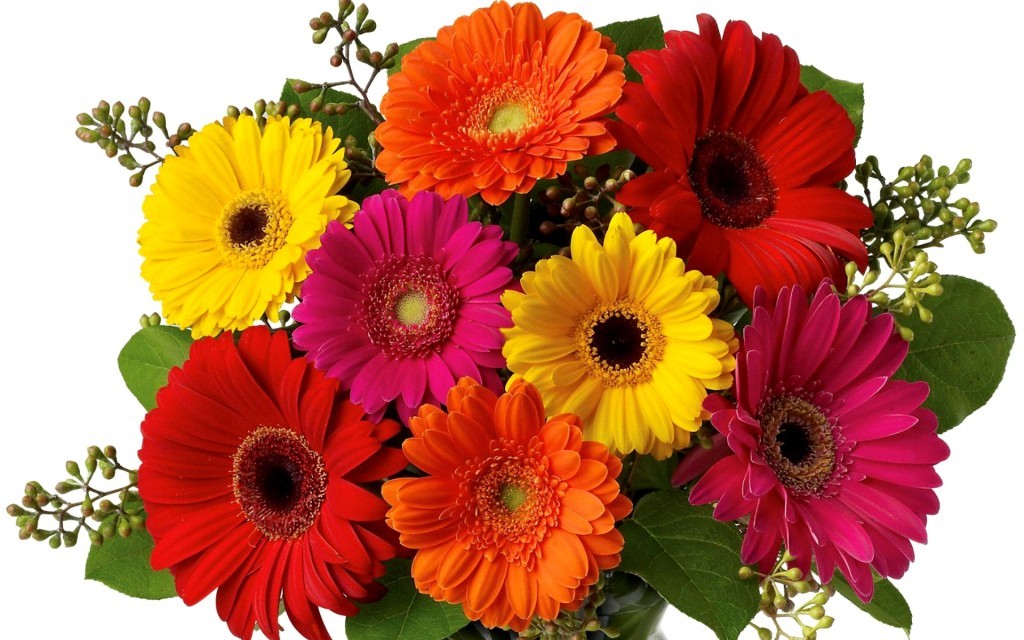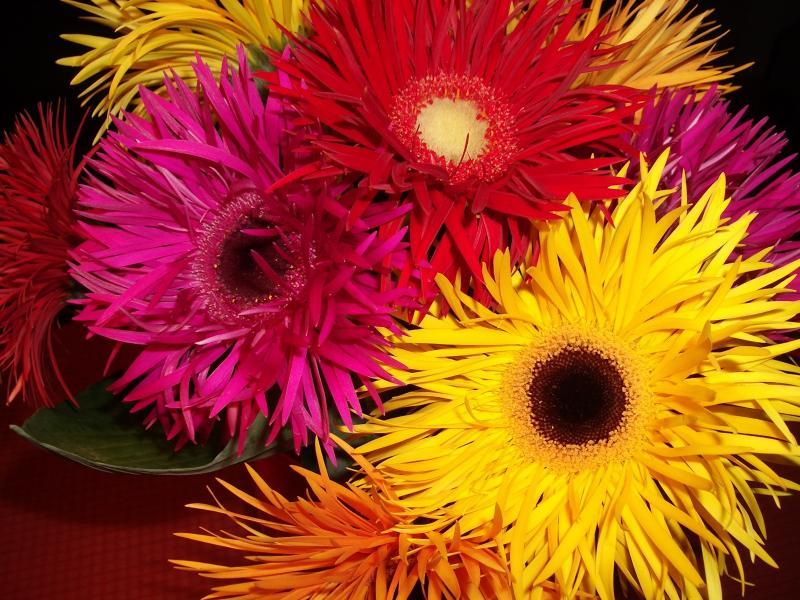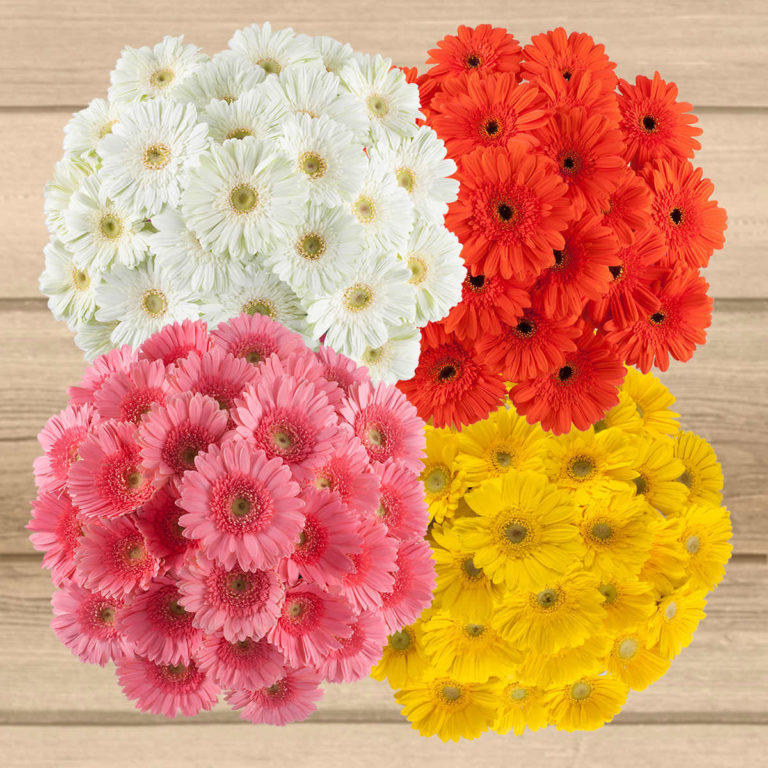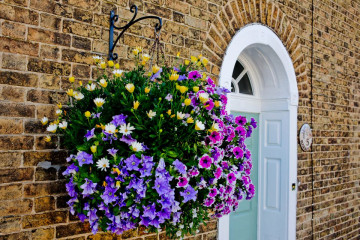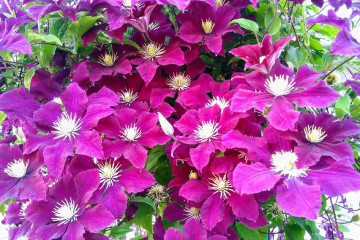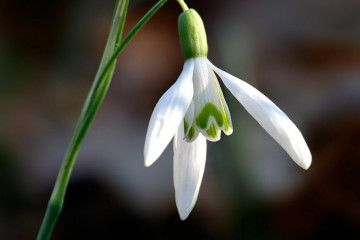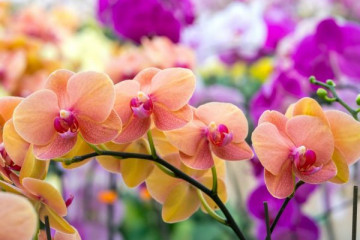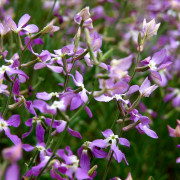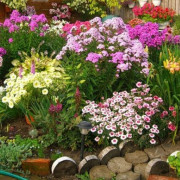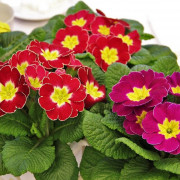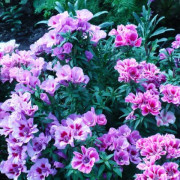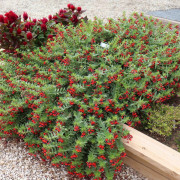What are gerbera flowers - how they look and how they grow
Content:
Gerbera flowers have become popular in European countries relatively recently - at the end of the 19th century. Today gerbera is loved and actively planted in many countries.
From the history of origin
It is not enough to know how and where gerberas grow in nature, you also need to get acquainted with the history of flower culture. Not many people know, but the name "gerbera" is heard today, thanks to the famous botanist Jan Gronovius, who lived in the 18th century. With his suggestion, the flower was named after his good friend, Traugott Gerber.
There is another theory - the name of the plant has Latin roots and comes from the word “herba” (herb).
Description
The gerbera flower is a perennial plant that belongs to the Asteraceae family. This perennial is quite thermophilic, because as a garden flower in open ground, it can only be planted safely in hot countries. If we talk about temperate latitudes, then here gerbera is most often cultivated in greenhouses or planted in a pot, like a beautiful home indoor flower.
The plant has a very developed root system. Its stem is rather short, with a rosette of roots that have a light green color. The peduncle is quite high and pubescent. The gerbera flower most of all resembles a very large chamomile, the color of which can be very diverse (almost any shade, except blue). Depending on the specific variety, the fact is exactly how the gerbera flowers look.
They may be:
- terry;
- semi-double;
- simple.
The size of the plant varies from 25 to 60 centimeters, the size of the inflorescence is from 4 to 15 centimeters.
Common varieties
Speaking about what gerberas are, you should consider their varieties in more detail. In nature, there are about 80 varieties of gerbera. Most of them come from South Africa and Madagascar.
Almost any modern gerbera is a hybrid adapted for growing at home or in greenhouses. The following varieties are optimal for growing on windowsills, in flower beds and in Russian gardens.
Gerbera Jameson
In the case of Jamson's gerbera, seed cultivation can be carried out. She is the ancestor of a large number of hybrid forms.
Gerbera Jameson is a perennial shrub with slightly raised feathery leaves collected in rosettes. The peduncle is thick enough. The diameter of the inflorescence is about 10 cm. Flowering continues for three weeks. The main feature of the Jameson variety is its bright colors.
Gerbera Klondike
Klondike Gerbera is a popular hybrid variety. The plant is quite tall - about 45 cm. Care for it is minimal, but the gerbera will bloom from July to October, during the season it will give about 50 flowers up to 11-12 cm in diameter.
Gerbera Abyssinian
The Abyssinian variety is a perennial that grows up to 45 cm. The leaves are elliptical and form into a root rosette. With a length of plates slightly more than 20 cm and a width of up to 14 cm, they have wavy or finely toothed notched edges. When the leaf is very young, it is covered with a light, barely noticeable downy. Apical inflorescences, solitary, white or reddish.
Gerbera Mini
Those who love beautiful homemade bright gerbera flowers are advised to pay attention to Mini gerberas. It is the smallest and most compact variety, growing up to a maximum of 30 cm in height. The description of the flower is approximately the following: inflorescences are small, painted in yellow, orange or red saturated colors. The Mini variety is highly regarded for its decorative effect. The species looks great as a single planting and in combination with other flower crops.
When and how they bloom
Gerberas are planted as an annual or perennial plant primarily for their amazing flowers.
Types of flowers
Depending on the color, there are yellow, white, red, pink and orange gerberas. Recently, a hybrid version has been especially in high demand - variegated flowers or crops with a shade of petals that varies in length.
Flower shapes
Depending on the shape of the petals, gerberas are wide, medium, and narrow-leafed. The flower has the shape of a basket, which is made up of two types of flowers. The central part is a small tubular type flowers, the edges are framed with pseudo-ligate flowers.
Flowering period
Gerbera is a kind of symbol that personifies the bright colors and rich colors of summer. The first period when the plant continues to bloom, if the proper conditions are created for it, or the climate allows, lasts from July to November. This is followed by a period of rest. It is very important - in winter the plant gains strength for a new flowering. The new flowering period begins in February and ends in May. From May to July, the culture re-enters a dormant period.
Gerbera-like flowers
In nature, there are a lot of flowers that look like gerberas.
The following flower cultures are most often confused with them:
- Rudbeckia. Rudbeckia flowers are as large as gerberas. The color is most often bright yellow, the diameter is 15 cm.The difference lies in the core of the flower - in rudbeckia it is slightly convex, brown.
- Chrysanthemum. Chrysanthemum is also a frequent visitor to Russian horticultural sites. Like gerbera, it can be any color other than blue. It is very simple to care for a chrysanthemum, the culture just gets along well in a temperate climate.
- Pyrethrum. Pyrethrum is another flower that resembles a gerbera. Its petals are white, lilac, yellow, crimson or dark cherry. The difference from the described plant lies both in the height of the pyrethrum - it grows up to 60 cm, and in the ease of care. In addition, feverfew grows well in cold climates.
- Calendula. Calendula, or, as this plant is also called among the people, marigolds, is another close relative of gerberas. The plant is orange or bright yellow in color. Moreover, calendula is a very interesting flower, its flowers have not only decorative value, but also healing. They are a very valuable raw material for pharmaceuticals.
- Gatsania. Gatsania is native to the South African region. It resembles a gerbera in all respects: color, size, color of leaves, shape of buds and flowers. The main difference is the presence of small spots at the base of the petals, somewhat reminiscent of the coloring of peacock feathers.
This plant is cultivated both as a perennial and as an annual. Ganatia is distinguished by its unpretentiousness.The culture grows well on sandy and rather poor soils and can do without watering for a long period.
Gerbera Facts
Some superstitions, facts and legends are associated with gerberas.
Some of them are:
- Flowers can stay fresh in water when cut for at least 20 days. At the same time, the minimum amount of water should be poured into the vase in order to prevent the stems from rotting.
- Breeders, despite all their efforts, have so far failed to create a blue gerbera variety.
- In terms of sales, the flower ranks fifth in the world. Only roses, tulips, carnations and chrysanthemums managed to get ahead of him.
- The English call the flower the transvaal chamomile.
- In total, there are more than 1000 varieties of crops, including hybrid varieties.
- On the flag and coat of arms of the South African province of Mpulanga, there is an image of a gerbera.
- In the language of flowers, gerbera symbolizes mystery, modesty or flirting.
Currently, you can find the widest assortment of gerberas in almost any florist shop. Despite the initial finickyness of the flower, many interesting varieties have been created that can be grown outdoors in not the warmest regions. As a result, everyone has the opportunity to enjoy the beauty of this delightful plant. Flower seeds can also be bought without any problems.
